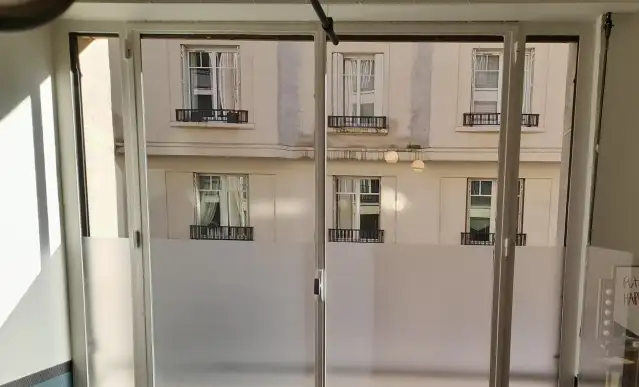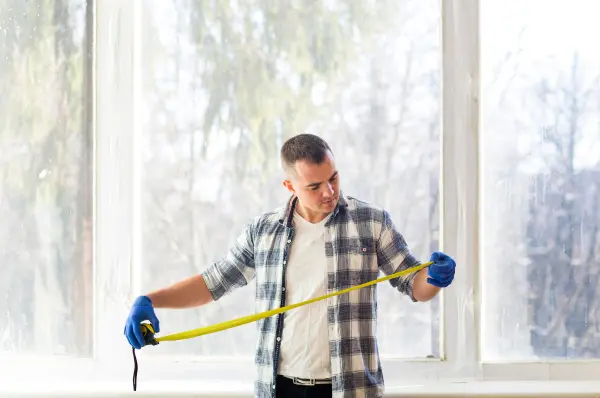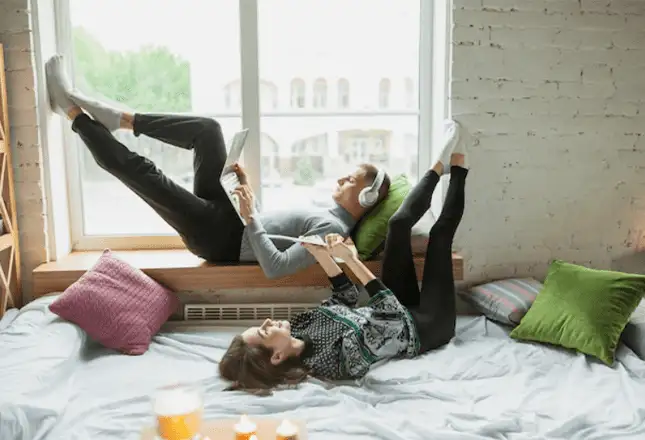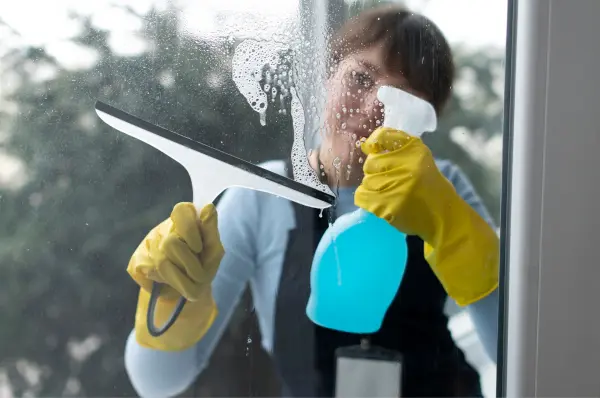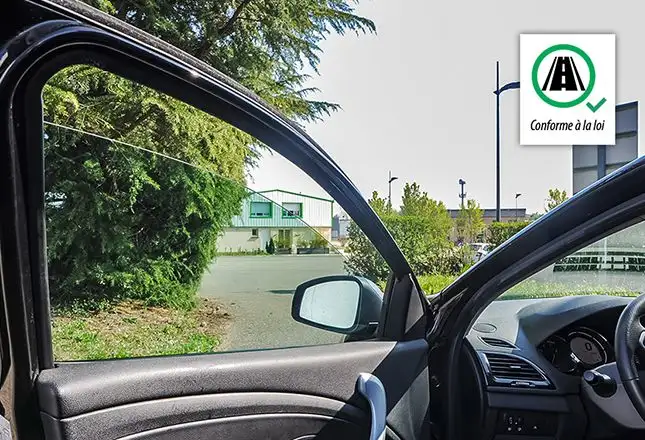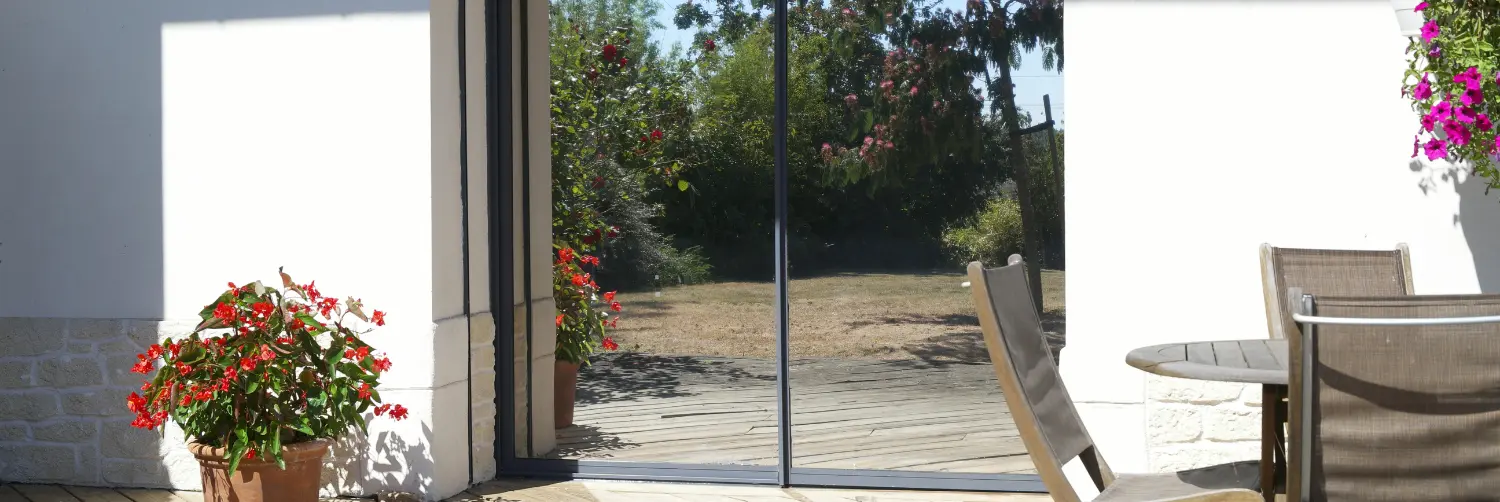
May 19, 2025
written by Alice O.
All you need to know about one-way mirror film
Frequently asked questions about this discreet, magical film
Are you curious about one-way mirror film? Wondering how it works, where to install it and whether it's really effective? This FAQ gives you clear, simple answers to help you understand this film and use it to your best advantage.
Protect yourself from prying eyes without spending your day in the dark!
What is one-way mirror film?
This glass adhesive creates a mirror effect on one side, while remaining transparent on the other. During the day, it lets you see without being seen, as the light is stronger on the outside than on the inside.
It's a great alternative to shutters or curtains if you're looking for privacy without compromising visibility!
To find out more, visit our article: What is one-way mirror film?
How does this film work?
Its operation is based on the difference in brightness between the two sides of the glass. This is known as the "light balance effect".
The brighter side becomes reflective (mirror effect), while the darker side remains transparent.
Does it still work in the evening if you turn on the lights?
No. At night, if you turn on the lights in your home, the mirror effect will be reversed. We'll be able to see you from the outside, and from the inside you'll have a mirror effect. Logical, since the mirror effect always occurs on the brighter side 😉
If your lights are switched off, the mirror effect will take place outdoors, thanks to the light from the sky and outdoor lighting.
If you turn on the lights in the evening, remember to close your shutters or curtains. Or opt for frosted film!
Are there any cases where two-way mirror film doesn't work?
The blackout mirror effect won't work if there isn't enough light difference between the 2 sides of the glass.
This is generally the case for conservatories or rooms with through-glazing: The alignment of the glazing does not create a dark enough side for the light balance to occur.
Should it be installed on the inside or outside of the glazing?
Choose outdoor installation to considerably reduce the risk of thermal shock.
Interior installation is possible on the following glazings:
- Non-laminated single glazing
- Petit double-vitrage (<1,2m²)
If in doubt, don't hesitate to contact an advisor.
Does it darken the room?
Compared to your "bare" glazing, more or less yes, depending on the film tint.
It's a bit like putting on sunglasses. 😎 Some are very lightly tinted, let a lot of light through and you'll hardly feel the difference. Others will be more tinted and will filter the light more.
One thing's for sure: compared to your glazing with the shutters closed, you're bound to gain in light! ☀️
Does the mirror effect always occur on the same side?
No, that's a common misconception. The mirror effect changes side according to the light. The direction of installation (inside or outside) has no impact on the side of the mirror effect.
Is it easy to install?
Yes, if you're patient, meticulous and follow the installation instructions to the letter . installation instructions.
This can be a little trickier for larger windows, for obvious practical reasons. Use a second person to handle the film more easily.
As a general rule, we recommendusing 2 people to install one-way mirror film - especially for the first few installations. It's easier and more reassuring. 💪
Don't want to install your film yourself? Call on our installation service!
Does one-way mirror film also protect against heat?
Yes, in addition to preserving privacy, this film has other advantages:
- It reduces the heat in your home by blocking some of the IR rays.
- It delays fading by blocking some UV rays
- Reduces glare thanks to its tinted finish
Is it repositionable?
Electrostatic films are repositionable. They're very practical during installation, as they give you the right to make mistakes. You can also apply your film for a period, remove it, store it and reapply it later. 👌
Adhesive films, on the other hand, cannot be repositioned. Once applied, if you remove them, they will no longer adhere to the glass.
Is the film easy to remove?
Yes, one-way mirror film can be removed without leaving a trace - or almost without a trace - if it's applied correctly. Simply peel it off gently and clean up any adhesive residues with a glass scraper and a removal solution.
Discover our blog article: How to remove window film?
How long does one-way mirror film last?
The average lifespan of our self-adhesive one-way mirror films is 5 to 10 years, or even longer, depending on the reference, exposure to sunlight and climatic conditions. They guarantee excellent resistance over time.
Our electrostatic one-way mirror films have a durability of 2 years.
Your question doesn't appear in this FAQ?
Contact us now! Our advisors are available Monday to Friday from 8am to 6pm to answer your questions.

